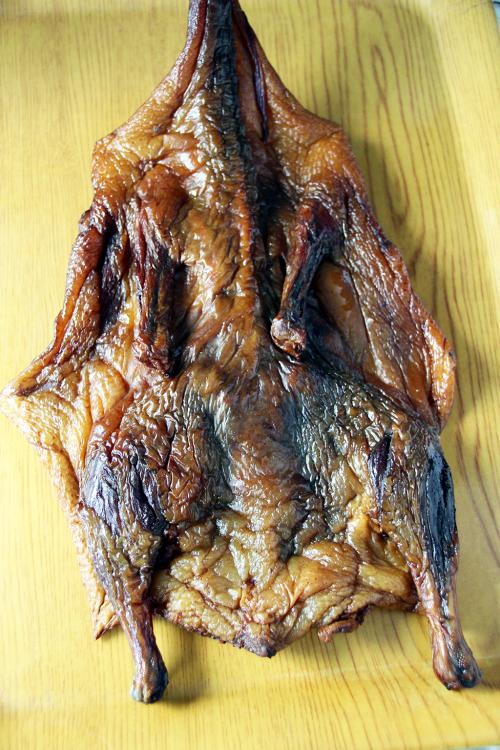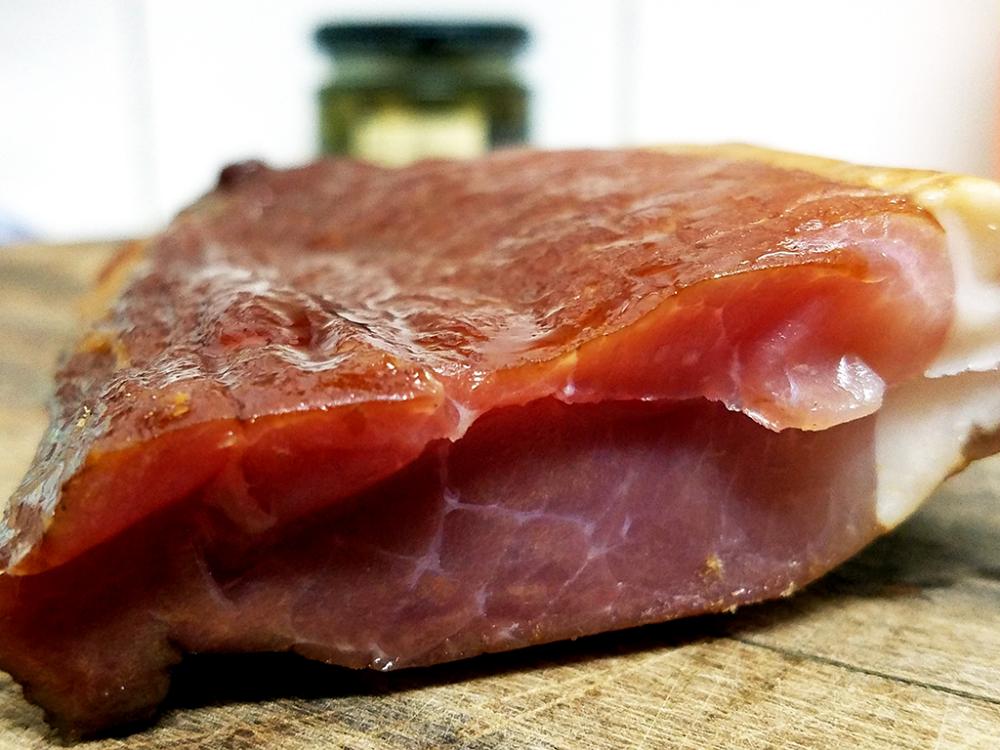21. 腊肉 (là ròu) preserved / cured meat or fish.
腊 (là) means ‘cured’ or ‘preserved’ and 肉 (ròu) means ‘flesh’ or ‘meat’. Used without further clarification, 肉 (ròu) is always taken to mean ‘pork’’; other meats are given fuller names – 鸡肉 (jī ròu), for example, is ‘chicken meat’. 腊 (là) is only used with meats; never vegetables.
I mentioned the top three examples of Chinese cured hams before, in this topic.
Most of the ham/bacon I can buy around here are home cured and from Hunan (Liuzhou borders Hunan province), which is famous for its la rou. Of course, meats can be cured in many ways: dried, dry-cured, wet-cured, smoked etc or in combinations of the above and Hunan uses them all.
Here are just a few examples.
The above are dry cured and lightly smoked. The next two images are of brined and heavily smoked bacon. They have a strong smell and very smokey taste which is typical of Hunan cuisine.
Next we have 晒兰 (shài lán), a very localised specialty, only found in the small town of 沅陵 (yuán líng) in north-west Hunan. The town has large Miao and Tujia ethnic minority populations.
Shai Lan (avocado for scale)
This is a lightly cured (dry-cure) ham incorporating pork, salt, wine and Sichuan peppercorns, usually cooked with beans and copious amounts of chillies.
Shai Lan with Brocolli Romanesco
More locally, on my side of the border, is the Dong people's town of 三江 (sān jiāng). They also have hams and bacons, but also do a number of others.
Sanjiang cured and smoked duck
Finally, here is some Sichuan la rou.
Winter is, of course, the main time for eating these hams and around October to December, the smell of hams being cured and/or smoked hangs in the air. So, I'll probably return to this come autumn.



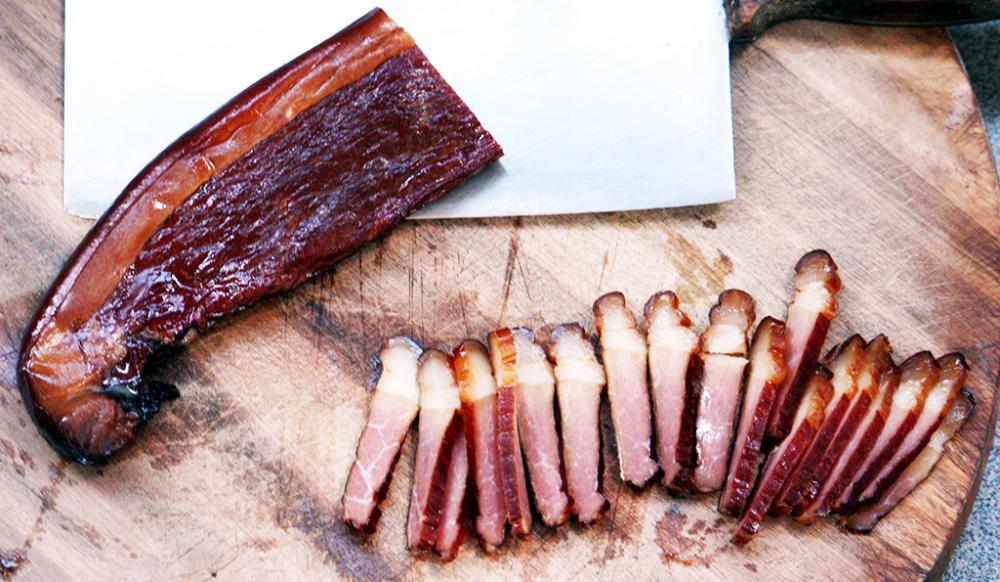

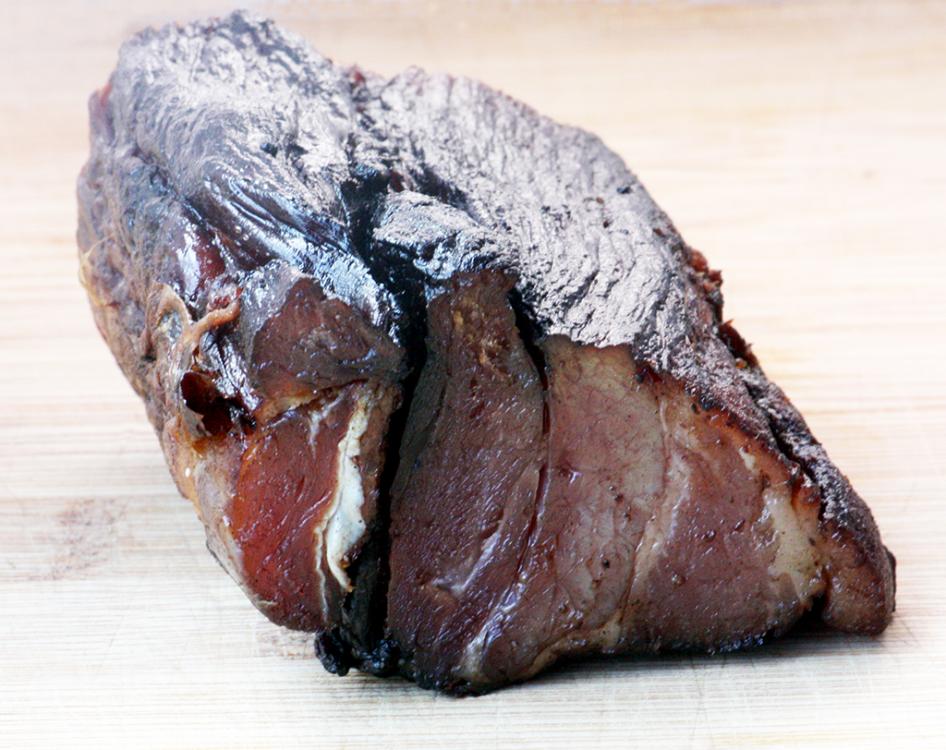
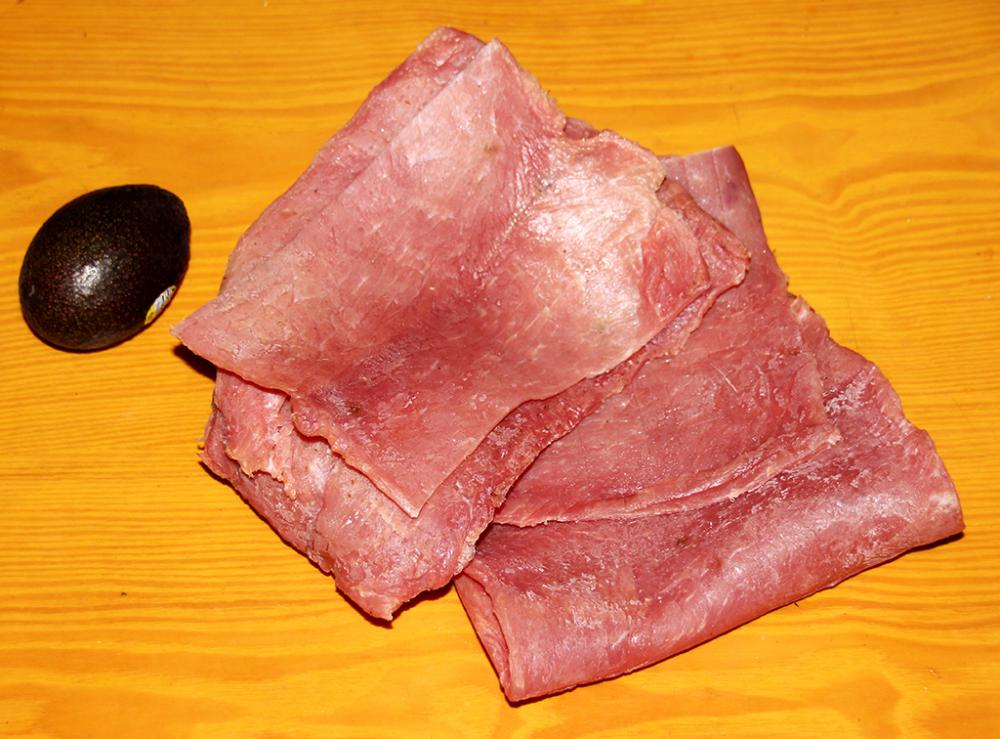
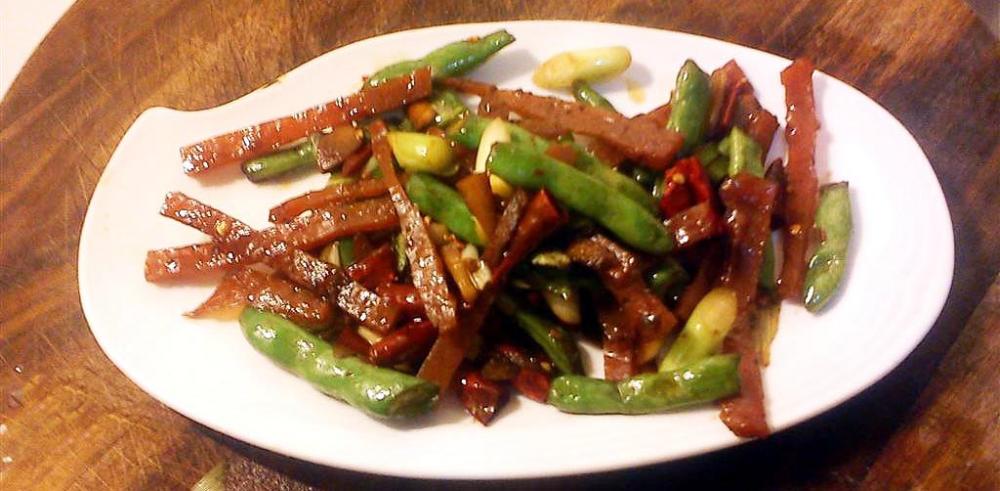
.thumb.jpg.a7e4ff774a88a90c3fceb5b8f43520d8.jpg)
